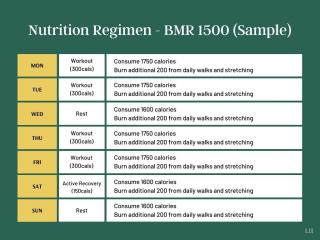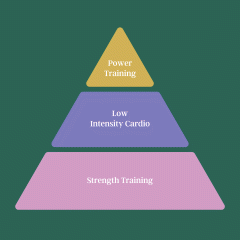My body feels tight, and my muscles are sore from sitting hunched over my computer as I write.
“I really need to exercise more,” I think as I feel the tension in my shoulders. “I need to get in better shape.”
We all have those things that don’t match up with how we think our lives should be.
While our instinct might be to put something on our to-do list and muscle our way through making changes (often beating ourselves up with self-judgment when we fail), this rarely works.
“Until you make the unconscious conscious, it will direct your life and you will call it fate.” –-Carl G. Jung
Making a change requires self-compassion and knowing how to create intentions that set us up for success.
How Intentions Really Work
Imagine you have a problem in some area of your life where you would like to act differently.
While it might seem counter-intuitive, when setting intentions for success, it’s important to consider why things are the way they are right now.
Assuming that your unconscious mind is always working for your highest good, what benefit might you gain from not getting what you think you want?
While it might not always seem like it, we always have a positive underlying reason for doing what we do, even behaviors that aren’t so good for us.
Ask yourself, “What is a positive reason my unconscious mind might want me to continue this unwanted behavior?”
The answers are always personal and different for each of us.
In the case of my own exercise problem (or lack of exercise), when I asked this question, I realized my unconscious mind might be seeing exercise as in direct opposition to my writing.
I had newly freed up a lot more space to write and I was coveting it. From an outside perspective, it might have seemed obvious that there was enough time to both write and exercise.
However, I had a feeling my unconscious mind saw time spent exercising as threatening to this other habit that was also in the interest of my well-being.
Writing was good for my soul, and finding time to do it more often was something I had only recently worked back into my life.
The answer?
I needed to come up with a new intention that encompassed both of my needs.
In addition, if you want to learn about the difference between intentions and goals, check out this video:
How to Create a New Intention for Success
I like to think of the intentions we consciously choose for our lives as a big safety net, a foundation arching under us, holding our energy, making sure we don’t fall too far from where we want our lives to go.
The more we direct our intentions with purpose, the more successful we become in achieving our desired outcomes.
Integrating the combined power of our unconscious and conscious minds ensures that we channel all our resources—our full self—when it comes to manifesting change.
I have recorded an audio-meditation and checklist to accompany this article, just for LifeHack.org readers, to help you take the information in this article even deeper. You can get your free copy of these tools on my website at LaurieSmith.com.
Here are10 steps for setting intentions for success.
10 Steps for Creating an Intention for Success
The following ten-step process is something I call an Activation Meditation(TM), which I developed and have been using in workshops and private sessions with my clients for several decades.
Activation Meditations(TM) are designed to help you access your own intuitive wisdom and direct your own transformation.
Activation Meditations(TM) incorporate the latest in neuroscience research, NeuroLinguistic Programming (NLP), Ericksonian hypnotherapy, energy medicine, creative visualization, and meditation techniques to help people activate their own power within to create deep and lasting change.
Step 1. Ask Yourself: What’s Not Working?
(In my case, sitting for hours at my computer without taking breaks or moving my body more was not working.)
Step 2. Imagine: How Do You Want To Feel Instead?
(I wanted to feel more relaxed, strong, and to have better posture.)
Once you have found your new intention, turn it into an affirmation.
An affirmation is written in the first person and present tense. It often begins with “I AM” (for example, “I am strong and relaxed”).
Step 3. Check In With Your Intuition
What is your gut instinct telling you about the intention you have chosen?
Our intuition is communicating with us all of the time through our bodies.
Is your new intention what you really want? How do you know? How does this new intention make you feel?
It’s important to listen to our intuition since our intentions are so personal.
(In my example regarding trying to exercise more, when I checked the intention “I am strong and relaxed” with my intuition, I didn’t get that feeling in my gut that to me means a definite YES.
When I asked myself what might be an even better intention, the word “open” popped into my mind.
That felt much better.
Previously, I had been believing that there wasn’t enough open time on my schedule to exercise. My muscles were tight, which meant there wasn’t enough open space in my body.
Even though it might not have seemed related to my desire to exercise at first glance, for me the phrase “I am open” was a perfect choice for my new intention.)
Step 4. Imagine a Symbol that Represents the Way You Want to Feel
This is a step most people skip and is perhaps the most powerful one.
As psychologists Carl Jung and Freud both discussed in their work, the unconscious mind communicates with us in symbols.
Using symbols can help accelerate our changes and make them stick. When seeking a symbol that represents your intention, trust whatever you come up with. There are no “right” or “wrong” answers.
Research shows visualizing is even more effective when we access all of our senses.
If your symbol had a sound, smell, taste, or feeling associated with it, what might those be? Is it dark or light? Is it large or small? (There are no right answers, trust whatever first pops into your head.)
People see all kinds of different symbols when doing this exercise. Your symbol might be an object, an image, a color, a sign, something you have seen before, or something new you created in your imagination. Some people don’t visualize easily and instead might just feel a feeling or associate their intention with a sound or scent.
(The symbol I saw was a spot of sparkling white light with a few colors speckled in. It was expansive and silent, calm yet energetic. This is the way I wanted my body, my life, and my inner spirit to feel as a result of exercising.)
Step 5. Visualize Your Symbol in Your Heart
Imagine bringing the symbol that represents your new intention to the top of your head. Then, imagine bringing it down through the crown of your head through your body into your heart.
You can do this very quickly by simply closing your eyes or in the form of a longer meditation, like the one I offer in the “free stuff” section of my website.
Step 6. Choose an Aligned Action
While still in a relaxed state, ask yourself:
“What is an action step—some specific way, a simple change, I can make to manifest my intention?”
(For me, the action step I thought of was to stretch more often. More than anything, I realized my body needed to stretch more throughout the day, especially after long periods of writing. Interestingly, stretching also helps muscles grow and relax, literally helping the body become more open and expansive, which was my intention.)
Step 7. Connect Your Action With an Existing Habit
What is a habit you already have that makes you feel the same way?
The idea is to start slowly and build upon areas where you are already experiencing success. Instead of finding a new window on your calendar to add a new habit in, add it to something you already do.
(For example, I decided every time I sat down or stood up from my computer or notebook, I would take a few minutes to stretch.)
Step 8. Brainstorm More Ideas
Brainstorm new ways you can integrate your new intention into your life. As you do, imagine your symbol. This will help bypass any inner resistance you might have to the new behavior.
(Brainstorming helped me to come up with many other creative ways to work small sessions of exercise into my day. I realized hiking could be a great time for coming up with new ideas for my writing.
By continually building on the success I had already experienced with my writing, I allowed my two positive habits to support each other, rather than being in opposition to my unconscious mind. As a result, I retrained my mind to see exercise as improving my writing practice, rather being in a separate compartment of my life.)
Step 9. Connect With Your Symbol and Intention Often
Imagine your symbol and repeat your affirmation/intention to yourself when you first wake up and right before you fall asleep. Research shows focusing on our intentions before sleeping can increase our ability to achieve our desired outcomes.
Imagine your symbol also as you go through the actions of your day. This increases the chance that your intention will expand and positively affect other aspects of your life as well.
Step 10. Check In and Celebrate Successes
Check in with yourself at the end of the day and see how well you’ve done.
Celebrate your successes and use periodic check-ins. Consider creating a ritual where you check in with yourself in the morning and before sleep, at the same time imagining your symbol and repeating your affirmation (#9).
This can help you keep your momentum going and help you find new ways to fine-tune the way you are integrating your intention into your life.
Final Thoughts
To review, there are two ways of setting intentions.
One is to choose intentions based on our rational mind – what we think we “should” be doing with our life, either based on others’ recommendations or how we think our lives should be.
The second is to tap all aspects of ourselves, our unconscious mind, imagination, intuition, and creativity.
Intentions set in this more holistic way succeed because they connect us with our self-compassion and provide us with handholds to grasp as we strive to create lives that honor all of who we really are.
Look at the list above from 1 to 10. Which step do you think you would be most apt to skip over or rush through as you create your own intention for success?
For me, it’s number 3. Sometimes I want to speed through exercises like this, and forget to check in with the wisdom of my intuition.
Our intuition, however, is the key to setting intentions and making them successful.
As you go through all these steps, experiment and discover ideas that work for you. Remember, you have within you the wisdom and positive energy that is always striving to help you create whatever is in your highest good.
You can find the Setting a Successful Intention downloadable checklist and the Creating a Positive Intention Activation Meditation(TM) that accompany this article on my website LaurieSmith.com.
More Success Tips
Featured photo credit: Khamkhor via unsplash.com





























































